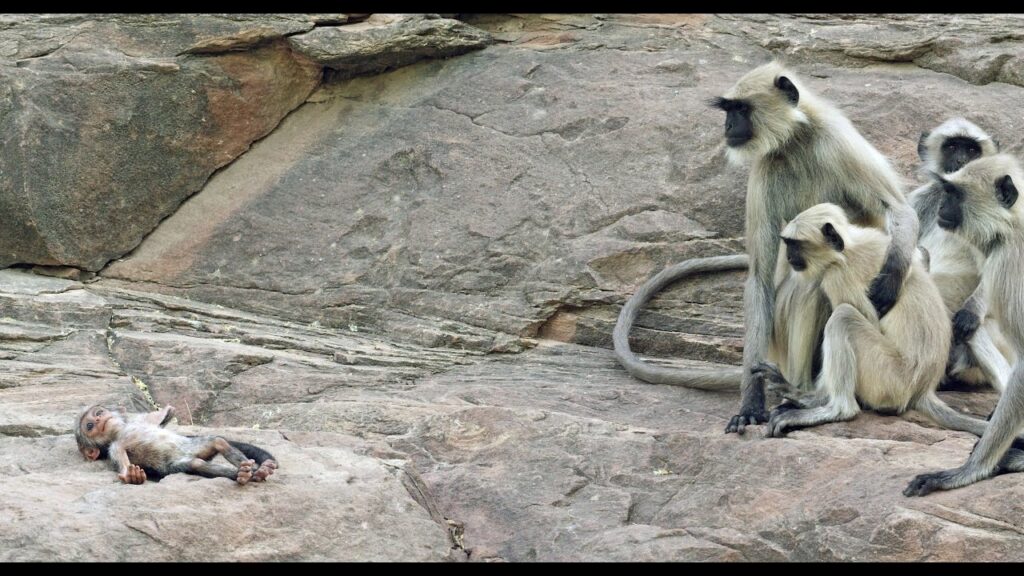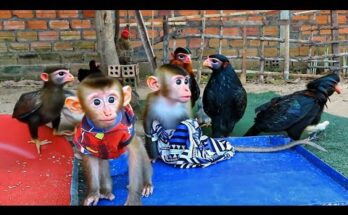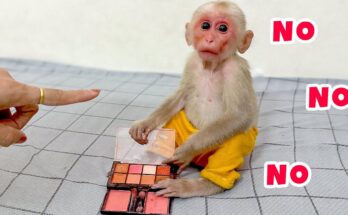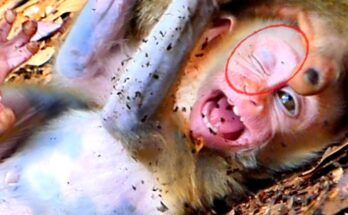
A team of wildlife researchers, working on a documentary about animal behavior, had introduced a life-like robot monkey into the langur troop. The robot, crafted with realistic fur, facial expressions, and gentle movements, was equipped with cameras to study the troop from within. At first, the langurs were cautious, keeping their distance. But curiosity soon overcame fear.
The young ones approached first, nudging and sniffing the robot. Then the adults followed. They examined it, groomed it, and within a day, the troop had seemingly accepted the robot monkey as one of their own. They played beside it, rested near it, and even shared food.
The robot stayed silent, only occasionally blinking or shifting slightly to appear natural. It didn’t fight for dominance, didn’t steal food, and never showed aggression. Its calm presence seemed to make it a peaceful member of the troop. But one day, while perched on a tree branch, the robot accidentally fell. It dropped to the ground with a thud, motionless, its lifelike eyes frozen open.
What happened next stunned the researchers.
The langurs rushed to the fallen robot. One adult gently lifted its hand. Another stroked its head. A younger monkey cried out in alarm and clung to its mother. Several langurs surrounded the robot, softly hooting and pacing with visible distress. One even tried to lift it, then sat beside it, touching its face tenderly.
The troop stayed near the robot for hours, refusing to leave it behind. There was no aggression, no indifference—only grief. It was as if they believed the robot had died, and their reactions were heartbreaking.
The scientists watching from afar grew quiet. Cameras kept rolling, but the atmosphere was heavy. These were not just animals reacting to a strange object. These were beings mourning what they believed was a lost companion.
Eventually, the troop moved on, but not without one final goodbye. An elder langur lingered beside the robot, gently brushing away a leaf that had fallen on its back before disappearing into the forest.
This moment—captured forever on film—became one of the most emotional scenes ever documented in wildlife research. It showed the world something powerful: that empathy, love, and loss are not just human emotions.


